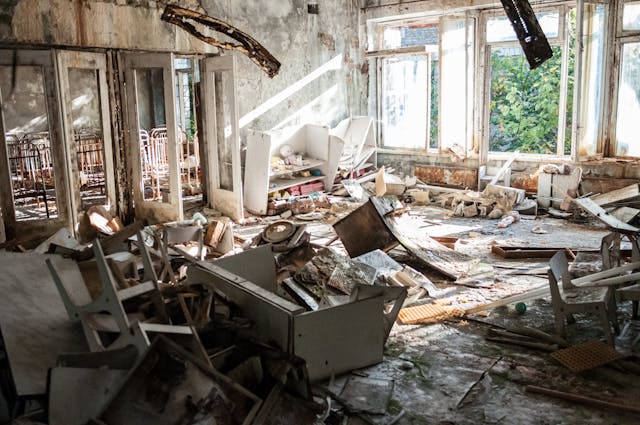Damaged Property? Here’s What to Take Care of First
Suddenly and unexpectedly, property damage can leave tenants and homeowners with quick decisions to make. Knowing the right order of events enhances your chances to minimize more damage, accurately record the occurrence for insurance needs, and start the repair process. Following some key actions right after finding property damage can help you negotiate this difficult scenario with clarity and intent, therefore safeguarding your interests all through the recovery process.
Ensure Safety and Assess the Damage
Safety always comes first, even after you find property damage. Should structural integrity seem weakened or if hazardous situations exist, immediately evacuate all people. Look for danger signals, including drooping ceilings, warped walls, exposed wiring, gas smells, or standing water close to outlets. Get official clearance before entering seriously damaged buildings. Once safety is assured, undertake a preliminary assessment recording the degree and kind of damage. Before moving any objects, carefully photograph and film from several angles. Make a written list of broken items including descriptions and approximations for value. Point up places that need quick attention to stop secondary damage. If any utilities, such as water, gas, or electricity, present hazards or could aggravate the situation, note those that must be turned off.
Contact Your Insurance Company
The effectiveness and speed of claim processing depend much on timely contact with your insurance company. Get in touch with your insurance provider no later than two days after discovering damage, no matter what time of day it is. For emergencies, most insurance companies have 24-hour claims hotlines. When you first get in touch, ask for direct contact information and a claim number for your assigned adjuster. Ask particular questions about whether you need to get several repair quotes and about what emergency repairs you can do before an inspection. For each emergency job, get written confirmation of verbal authorizations. Your ability to influence the amounts reimbursed is significantly enhanced when you are aware of the distinction between replacement cost coverage and real cash value. Send in the necessary paperwork right away since many policies have deadlines for submitting claims and finishing repairs.
Prevent Additional Damage
Usually, an insurance need, taking quick action to stop collateral damage is a practical necessity. Most insurance has a “duty to mitigate” clause calling for reasonable steps to stop more damage following the first occurrence. Apply tarps fastened with appropriate anchoring to stop water from seeping into your roof. Using pumps, wet vacuums, or expert services, remove standing water to stop mold development. Often arriving within hours of contact to install temporary barriers or new glass, emergency glass services offer fast responses for securing vulnerable windows and doors. Start drying things right away in water-affected areas using fans, dehumidifiers, and enough ventilation to stop mold from developing. Keep receipts for goods and services and record any mitigating activities using dated photos.
Secure Temporary Accommodations if Necessary
Finding suitable temporary lodging becomes absolutely vital when damage to your house renders your house temporarily uninhabitable. Review your insurance records for clauses marked “Additional Living Expense” or “Loss of Use,” which usually cover charges above your regular household budget during your relocation time. Before you schedule, know the limits on coverage duration and expense ceilings. When choosing temporary housing, take proximity to businesses, schools, and medical facilities into account. Hotels offer quick fixes, but over time, they start to get expensive. For displaced people who intend to continue for more than a few weeks, short-term apartment rentals provide more affordable options. Track all of your expenses, including receipts for hotel, food, transportation, and storage, very precisely. Some policies eliminate out-of-pocket costs by including direct billing choices between hotels and insurance carriers. Discuss with adjusters whether safe living in undamaged areas is feasible with suitable adjustments for partial home damage. Create a dependable mail forwarding system and notify important service providers with your temporary address to ensure the continuance of required communications during the relocation time.
Develop a Strategic Recovery Plan
Developing a thorough recovery plan gives the restoration process unambiguous direction and priority. Start by getting thorough professional assessments from competent experts focused on your particular kind of harm. Ask for itemized written estimates with precise material, labor, project, and payment dates. Examine research contractor credentials closely using state licensing boards and consumer protection agencies to confirm licensing, insurance, bonding, and reputation. Tell your insurance adjuster exactly how you want estimates approved and how you want payments distributed. Plan realistically for repairs with built-in contingency for unanticipated problems. Keep a specific notebook for all of the recovery procedure related documentation.
Conclusion
To properly fix property damage, you need to follow a methodical process that puts safety, documentation, damage reduction, and strategy planning at the top of the list. By doing these important steps in the right order, you can speed up the recovery process and protect your rights during the claim and repair period. Recall that your best chances for a positive conclusion during this difficult period are thorough documentation, timely insurance correspondence, and proactive damage prevention.







